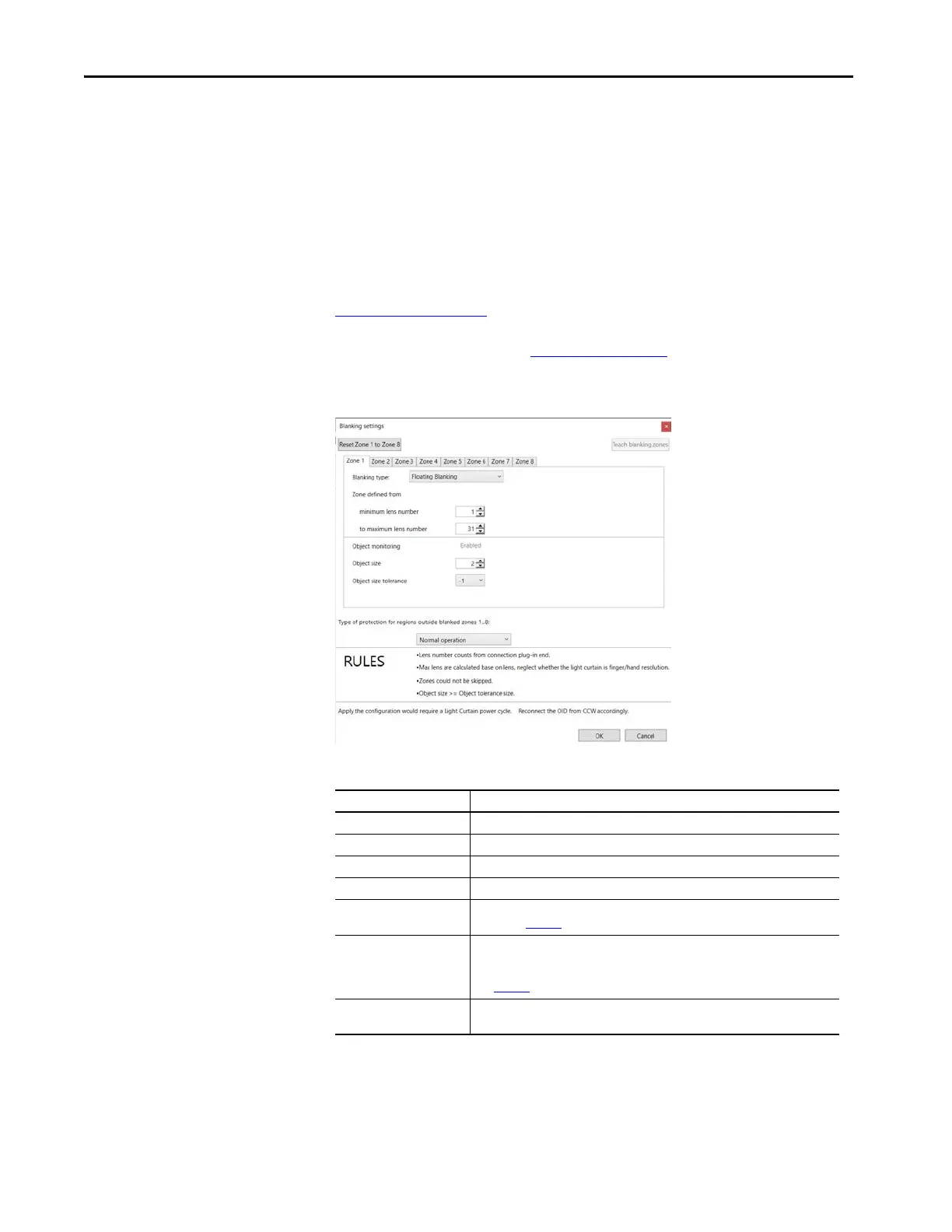170 Rockwell Automation Publication 450L-UM001D-EN-P - December 2019
Chapter 9 Connected Components Workbench Software
Floating Blanking
Floating blanking allows an object to move within the specified lens range
without causing the light curtain OSSD outputs to turn off. The light curtain
monitors the presence of the blanking; therefore, the object must always be
within the specified lens range. If the object height is less than the minimum or
more than the maximum number of lenses, the light curtain outputs turn OFF.
Settings
Figure 138 on page 170 shows the settings for Floating Blanking. Up to eight
zones can be configured for floating blanking. The Teach Blanking Zones are
disabled for floating blanking. Table 63 on page 170
describes the settings. Select
the values appropriate for the application.
Figure 138 - Floating Blanking Settings
Table 63 - Floating Blanking Settings
Setting Description
Blanking type Select Floating Blanking.
Minimum lens number This setting is the first that participates in the range of lenses.
Maximum lens number This setting is the last lens that participates in the range of lenses.
Object monitoring Always enabled for floating blanking.
Object size Select the number of lenses typically blocked by the object. The number is subject to
certain (seeTab le 64
).
Object size tolerance The light curtain allows the object size to be smaller by either 1 or 2 lenses for finger
resolution and 1 lens for hand resolution. Select the number of lenses that
accommodate the variation in object size. The number is subject to certain rules
(seeTab le 6 4
).
Other zones Select normal operation, reduced resolution one object, or reduced resolution two
objects for the other zones.

